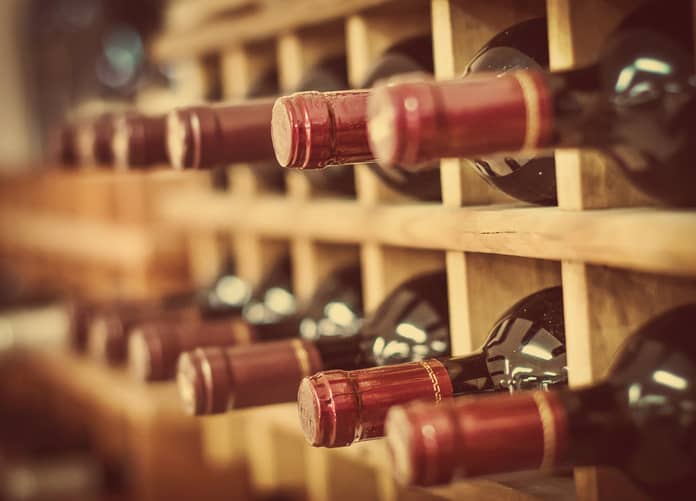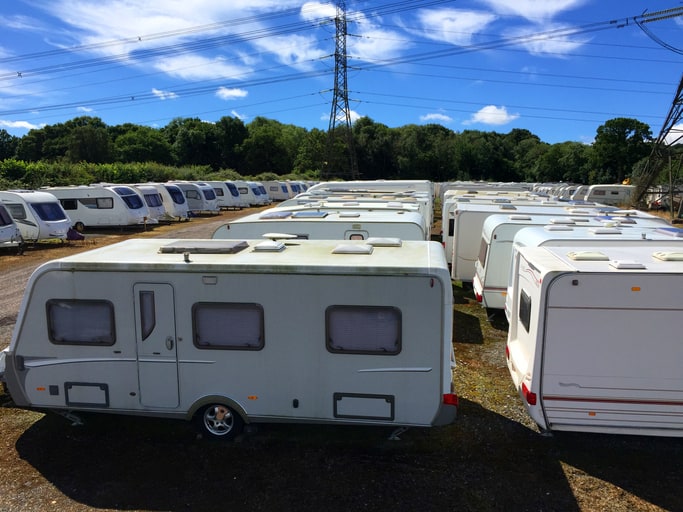How to Boost Revenue with Wine Storage

As Americans continue to acquire more and more stuff, niche storage is a thing now. Really. If you don’t believe me, choose a random thing that people collect and Google it along with the word “storage”.
If you already offer sought-after amenities at your facility, but still aren’t at capacity, it might be time to start exploring these niche storage demands to draw in a new target market. Whether you are looking to boost business at an existing facility or are planning to build climate controlled units, there’s a thriving market that you should pop the cork on right away: wine storage.
What is a wine storage facility?
A wine storage facility is any storage space that offers the optimal conditions for storing wine for long periods of time. Long-term storage of wine requires maintaining a specific temperature and humidity control all year round. It could be a traditional self-storage unit that offers the right conditions and plenty of room for stacking cases of wine, or come in the form of smaller wine lockers where budding collections can be kept. Some wine storage facilities may even feature a wine tasting room environment where customers can enjoy their libations.
Offering wine storage is one way you can gain a lot of new business – but you have to do it right. You might be surprised at how many people in your community are wine enthusiasts, and even more surprised at how many people know enough about their wine to seek out a place where they can store it properly. Most people don’t have wine cellars in their homes, so there is a sizable market need for wine storage.
In addition to attracting new customers, the pricing per square foot for wine storage is higher than regular storage. Dedicating a unit or multiple units to be wine storage units could be a smart way to boost revenue if your facility is in the right market.
So, how do you break into this market? Well, first you should know how wine needs to be stored in order to maintain its quality and flavor. Although there are some conflicting opinions among wine experts regarding the best ways to store wine, there is more or less a general consensus regarding the range of temperature and humidity that is ideal for storing wine.
Let’s review how wine must generally be stored so you’ll know exactly what you need:
Wine is ideally stored between 45 and 65 degrees Fahrenheit
To keep wine from aging too quickly, wine must be stored between 45 and 65 degrees Fahrenheit. The general consensus is that storing wine at 55 degrees is best.
Why?
Because high temperatures significantly change wine (it cooks it – really!), and temperatures that are very low could freeze or dry out the wine bottle’s cork. Why is this bad? A dry cork can crack, which allows air into the bottle, thus oxidizing the wine. This can significantly change its aroma and flavor.
Ever tasted oxidized wine? It’s great, if you love the taste of vinegar… but if you love the taste of fine wine, you’re out of luck: oxidation will certainly sour both the taste buds and mood of anyone who has invested in a very special bottle.
60-80% humidity keeps wine corks well-conditioned
Even if wine is well-sealed and air-tight, that doesn’t mean that humidity won’t affect it. In fact, humidity levels have a big influence on the condition of the wine bottle’s cork, even if it’s sealed tightly. Maintaining 60-80% relative humidity where wine is being stored helps keep the cork from drying out and cracking, avoiding that dreaded oxidation that no one wants.
Some people who don’t have the capability of controlling the humidity where they store their wine try to keep the cork moist by storing the bottles on their sides so that the wine is touching the cork, which prevents the cork from drying out, and most experts agree that this is the best way to store any bottle.
It doesn’t matter if it’s white or red, as long as you keep it dark
Believe it or not, UV light has a significant influence on wine integrity. Sunlight, incandescent light, and fluorescent light can break down complex molecules in your wine. Ever wonder why good wine typically isn’t stored in clear bottles? Those green, black, and bluish bottles protect wine from UV light – but they can only do so much. Keeping wine out of the light helps it maintain its flavor, color, and aroma.
How to provide wine storage options at your self-storage facility
Now you know how wine is supposed to be stored, but what does this mean for you as a self storage facility owner? Well, obviously anyone who really cares about their wine collection knows better than to use their refrigerator as a long-term solution, and unless they want to keep their entire home at 55 degrees all the time, they need a solution for wine storage.
Of course, you can invest in units that are specifically designed for wine storage, but there are other ways to create the perfect conditions for wine. Keep in mind, however, that you must be very careful – the last thing you want to do is boast about your wine storage capabilities, only to ruin a tenant’s precious collection of Bordeaux bottles because you’re not actually sure what you’re doing.
If you have climate control at your facility, guess what? You might already have the capabilities of creating the perfect atmosphere for storing wine, and you could soon be storing valuable collections for sommeliers and wine collectors as quickly as you can adjust the temperature on your climate controlled units’ thermostat. But keep in mind, having temperature control doesn’t mean you’re controlling humidity, too.
If you advertise wine storage, you need to make sure that you can control the humidity in your units, or you might have a lot of angry winos on your hands, and it won’t be pretty. Furthermore, your climate controlled units must be interior units, and you must be diligent about ensuring that your tenants do not prop open the outer door. If the door is open too long or too often, it can significantly offset the humidity and temperature inside your building, and it can happen more quickly than you think. It’s best for the entire climate-controlled interior area of a building to be set aside for wine storage to keep these conditions constant.
Here are some suggestions to help you prepare your climate-controlled units for wine storage:
1. Do some market research. Search for wine storage in your area and see what’s out there. If you live near any vineyards or wineries, you’re already in a prime area to benefit from this market! That said, if you are in a place like Napa Valley, there may be already be a great deal of professional wine storage services for you to compete with. If not, you still might have a potential customer base, especially if there are few businesses providing wine storage in your community.
2. Do an experiment. Set the thermostat of one of your climate controlled units to 55 degrees and 60% humidity to create the conditions for proper wine storage. Monitor the conditions inside this unit while it’s empty for at least a week. Check out how much it fluctuates and see how stable the atmosphere is. Try doing this when it’s really hot or really cold outside so you can see how dependable your controls are, and be sure that you open and close the door to the hallway where your unit is often so you can see how hallway traffic affects the climate of your unit.
3. Try storing a few bottles for a month or two before offering wine storage to the public. Try offering a friend a place to store wine for free, or even plan a party at the end of your storage experiment so you don’t have to drink all of that wine yourself, and you can find out how well the wine held up in your unit.
4. Make sure that your units remain dark. If there are lights in your unit, use the lowest lumen bulbs you can find.
5. Invest in shelving for the units you want to set aside for wine storage. Having wine racks in your units provides additional convenience for your renters, who won’t need to bring anything but their bottles to your facility.
6. If you don’t have a back-up generator for your facility, you’ll certainly need one – if your electricity fails, this will keep your tenants’ wine stable, and your tenants from worrying about their valuable collections being damaged.
Now that you know how you can store wine at your facility, you can tap into this thriving market. If there’s truly a market for wine storage in your community, you’re sure to reap the benefits – and that’s something you can certainly raise a glass to.
Related Resources:

How to Start a Self-Storage Business
Launching a self-storage business for the first time? Start here and learn everything you need to know before you buy or build. Keep Reading

Building a Fortress: A Guide to Self-Storage Security
Need a little inspiration for advertising your self-storage facility? Check out these three examples to get your creative juices flowing. Keep Reading

7 Ways to Boost the Value of Your RV and Boat Storage Facility
Need a little inspiration for advertising your self-storage facility? Check out these three examples to get your creative juices flowing. Keep Reading